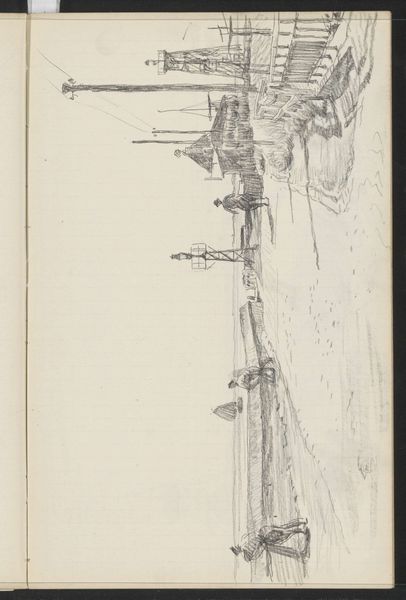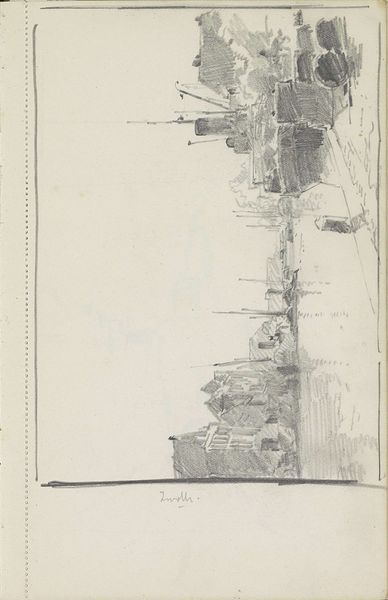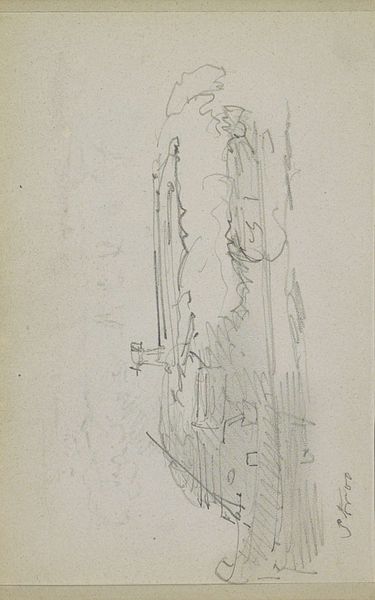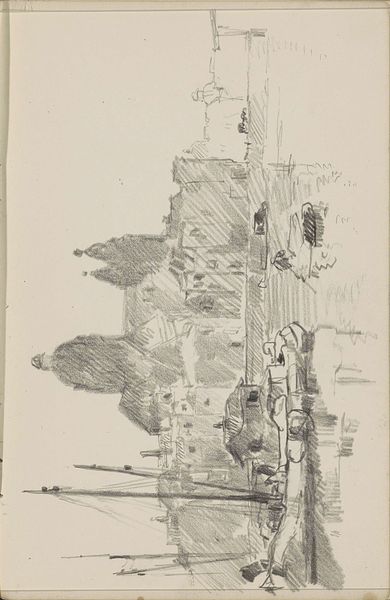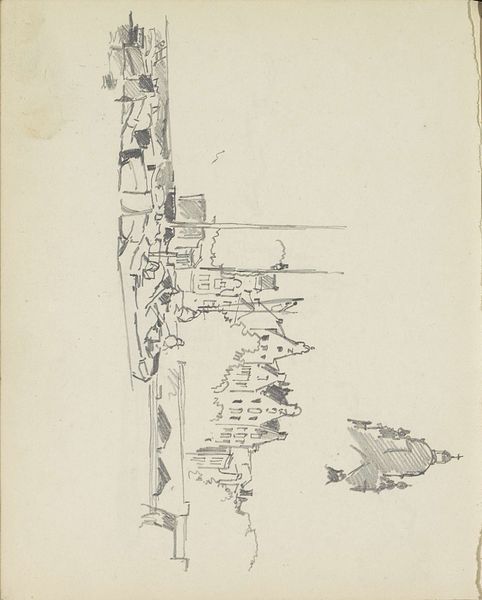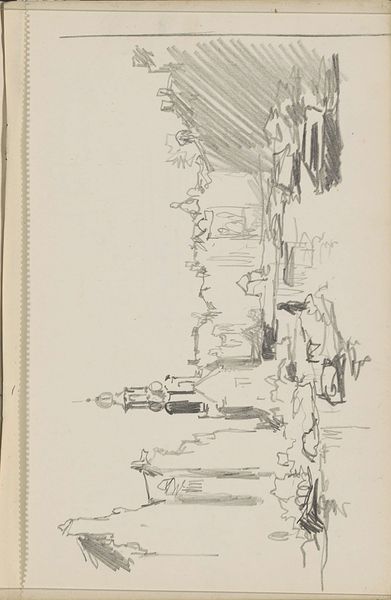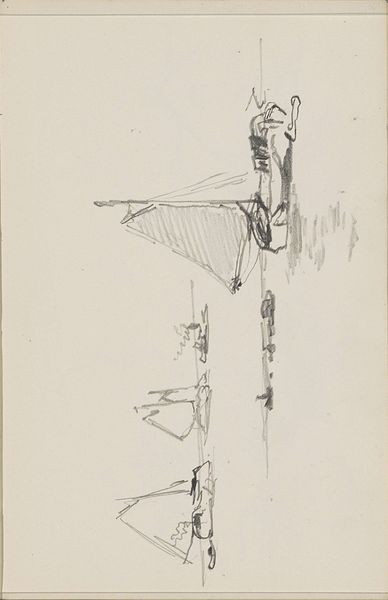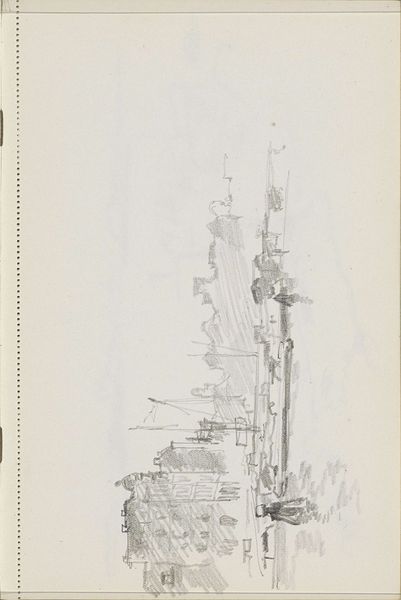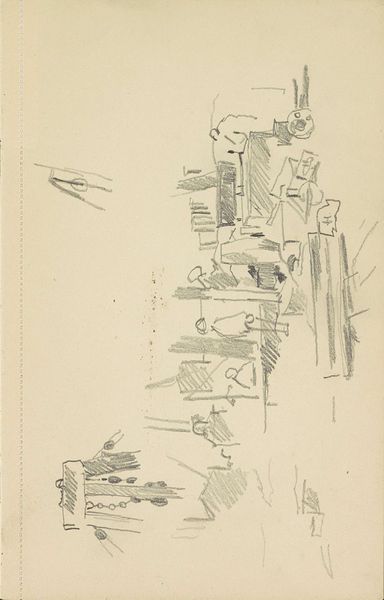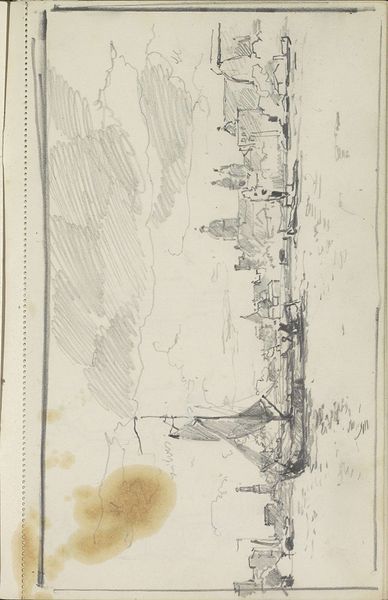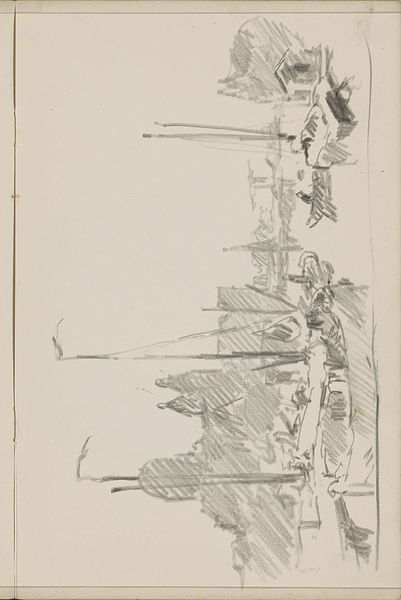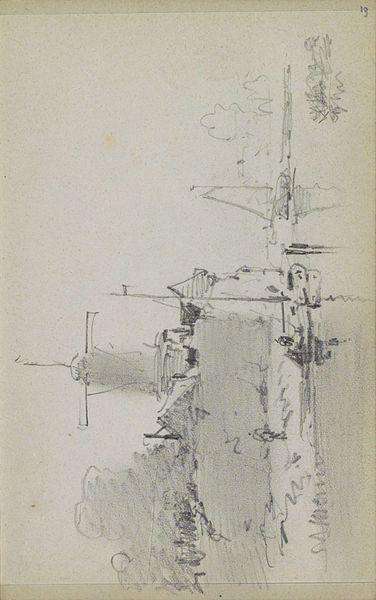
drawing, pencil
#
drawing
#
landscape
#
pencil
Copyright: Rijks Museum: Open Domain
Editor: So here we have Cornelis Vreedenburgh's "Gezicht op de Amstel te Amsterdam," a pencil drawing sometime between 1890 and 1946. It’s currently held in the Rijksmuseum. It’s such a light, airy sketch, but somehow still feels very grounded. What strikes you when you look at it? Curator: Well, considering the period in which it was made, and Vreedenburgh's focus on the Amstel, I see a commentary on Amsterdam's urban development. The Amstel wasn't just a scenic river, but a vital artery for trade and industry. The drawing style, seemingly quick and informal, presents a romanticised view of a city undergoing intense modernization. Editor: A romanticised view? Curator: Yes, think about the role art played in shaping public perception. Artists often selectively portrayed reality, omitting or downplaying less desirable aspects. Consider the deliberate use of pencil: It conveys immediacy, implying that what's captured is truthful and in-the-moment, while potentially glossing over the social and economic realities of the time. Editor: That's an interesting point. So the 'truthfulness' might actually be carefully constructed. How do museums then handle presenting works like this, knowing that they aren't necessarily neutral records? Curator: That's the crucial question. Museums need to contextualize these images, to expose the politics embedded within seemingly straightforward depictions. By displaying the work, alongside textual information or other related materials, we try to unravel these complexities and encourage visitors to look beyond the purely aesthetic qualities. Editor: So it’s about understanding the historical narratives *behind* the visual. I see it! That gives me a lot to think about when looking at art, especially landscapes. Curator: Indeed. Examining those layers enhances the overall significance, enriching both our perception and public awareness.
Comments
No comments
Be the first to comment and join the conversation on the ultimate creative platform.
